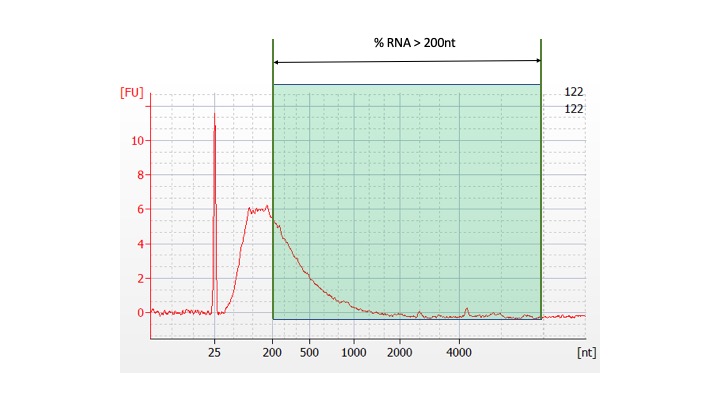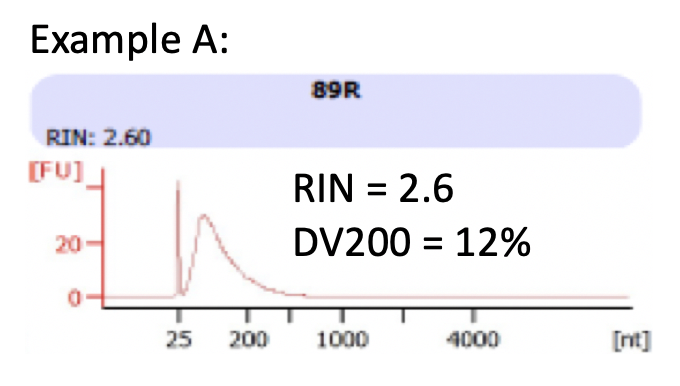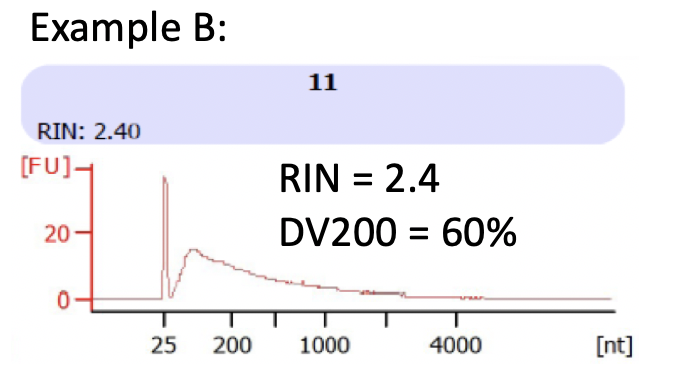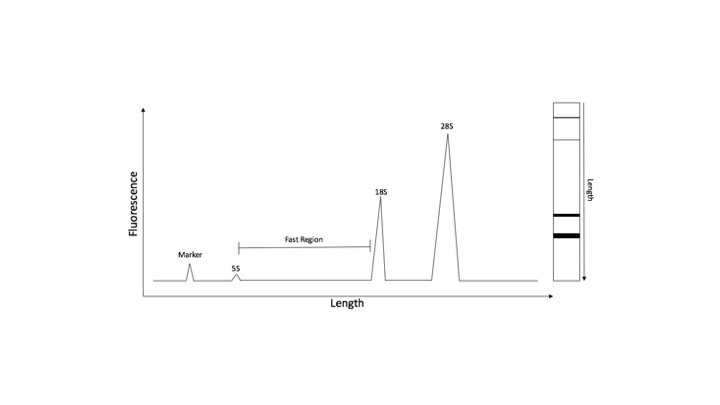There is not a singular RNAseq library preparation methodology. There are several different approaches and often several different commercially available kits for each. The most appropriate method often depends first on sample quality and quantity and, sadly, secondly on the specific research question(s). MBCF spends a significant amount of time and effort evaluating methods to ensure we are using the most appropriate and cost effective approach for your project.
Already know what you need? This way to polyA enrichment (mRNAseq) or rRNA depletion (TotalRNAseq) >
RNAseq Decision Tree
PolyA enrichment (mRNAseq) is the most common library prep approach used in our lab, but it requires >50ng of high quality RNA. If your samples do not meet these requirements, all is not lost! There are several other options optimized for samples that are low input, degraded, or both.
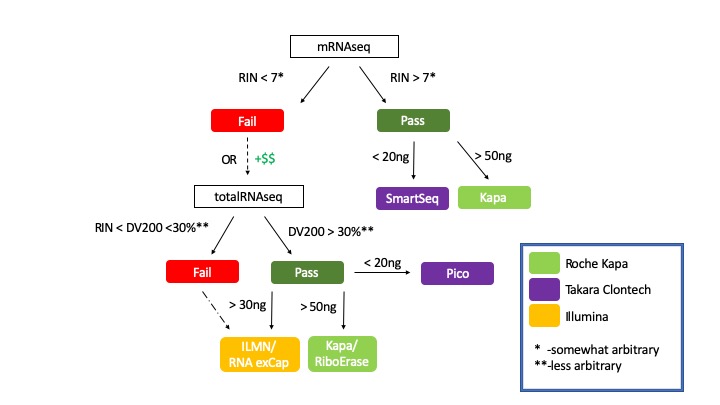
RNA Quality Control
Accurate evaluation of RNA quality and quantity is critical to produce high quality RNAseq data and is often the primary factor used to determine the optimal library prep methodology. RNA QC is included as part of all of library prep services and is also available as a stand alone service. RNA is assayed using the Agilent (AATI) Fragment Analyzer or Agilent Bioanalyzer to generate, concentration measurement, RIN/RQN score, and/or DV200 metric.
RIN or RQN
RNA Integrity Number or RNA Quality Number are similar metrics generated by the Agilent Bioanalyzer and Fragment Analyzer respectively. They are calculated based on the the relative intensity of the 18S and 28S ribosomal RNA electrophoretic peaks. Although somewhat arbitrary, we use a cutoff of 7 or more to define “high quality” RNA suitable for polyA enrichment library prep methods (mRNAseq). When dealing with degraded RNA, DV200 is a much more appropriate metric to make informed protocol decisions.
DV200: Fragment Distribution Value > 200nt
Measure of the percentage of RNA that is greater than 200 nucleotides. This metric is more informative than RIN/RQN scores because it more accurately capture the extent of degradation. And most importantly, it informs the fraction of the RNA sample that can likely be converted into sequencing library. Samples may have similar RIN scores, but very different DV200s (see examples below).
